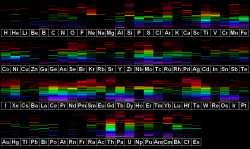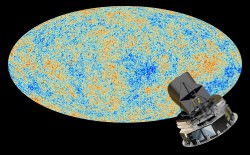We hear that rocks are a certain age, and stars are another age. And the Universe itself is 13.7 billion years old. But how do astronomers figure this out?
I know it’s impolite to ask, but, how old are you? And how do you know? And doesn’t comparing your drivers license to your beautiful and informative “Year In Space” calendar feel somewhat arbitrary? How do we know old how everything is when what we observe was around long before calendars, or the Earth, or even the stars?
Scientists have pondered about the age of things since the beginning of science. When did that rock formation appear? When did that dinosaur die? How long has the Earth been around? When did the Moon form? What about the Universe? How long has that party been going on? Can I drink this beer yet, or will I go blind? How long can Spam remain edible past its expiration date?
As with distance, scientists have developed a range of tools to measure the age of stuff in the Universe. From rocks, to stars, to the Universe itself. Just like distance, it works like a ladder, where certain tools work for the youngest objects, and other tools take over for middle aged stuff, and other tools help to date the most ancient.
Let’s start with the things you can actually get your hands on, like plants, rocks, dinosaur bones and meteorites. Scientists use a technique known as radiometric dating. The nuclear age taught us how to blow up stuff real good, but it also helped understand how elements transform from one element to another through radioactive decay.
For example, there’s a version of carbon, called carbon-14. If you started with a kilo of it, after about 5,730 years, half of it would have turned into carbon-12. And then by 5,730 more years, you’d have about ¼ carbon-14 and ¾ carbon-12.

This is known as an element’s half-life. And so, if you measure the ratio of carbon-12 to carbon-14 in a dead tree, for example, you can calculate how long ago it lived. Different elements work for different ages. Carbon-14 works for the last 50,000 years or so, while Uranium-238 has a half-life of 4.5 billion years, and will let you date the most ancient of rocks. But what about the stuff we can’t touch, like stars?
When you use a telescope to view a star, you can break up its light into different colors, like a rainbow. This is known as a star’s spectra, and if you look carefully, you can see black lines, or gaps, which correspond to certain elements. Since they can measure the ratios of different elements, astronomers can just look at a star to see how old it is. They can measure the ratio of uranium-238 to lead-206, and know how long that star has been around. How astronomers know the age of the Universe itself is one of my favorites, and we did a whole episode on this.

The short answer is, they measure the wavelength of the Cosmic Microwave Background Radiation. Since they know this used to be visible light, and has been stretched out by the expansion of the Universe, they can extrapolate back from its current wavelength to what it was at the beginning of the Universe. This tells them the age is about 13.8 billion years. Radiometric dating was a revolution for science. It finally gave us a dependable method to calculate the age of anything and everything, and finally figure out how long everything has been around.
So, fan of our videos. How old are you? Tell us in the comments below.
Thanks for watching! Never miss an episode by clicking subscribe.Our Patreon community is the reason these shows happen. We’d like to thank Ryan Finley and the rest of the members who support us in our quest to make great space and astronomy content every week. Our community members get advance access to episodes, extras, contests, and other shenanigans with Jay, myself and the rest of the team. Want to get in on the action? Click here.

